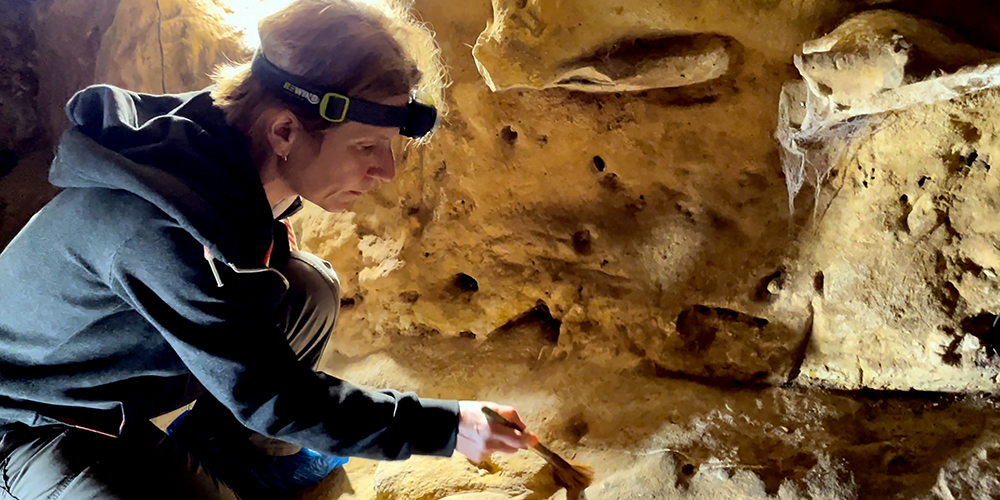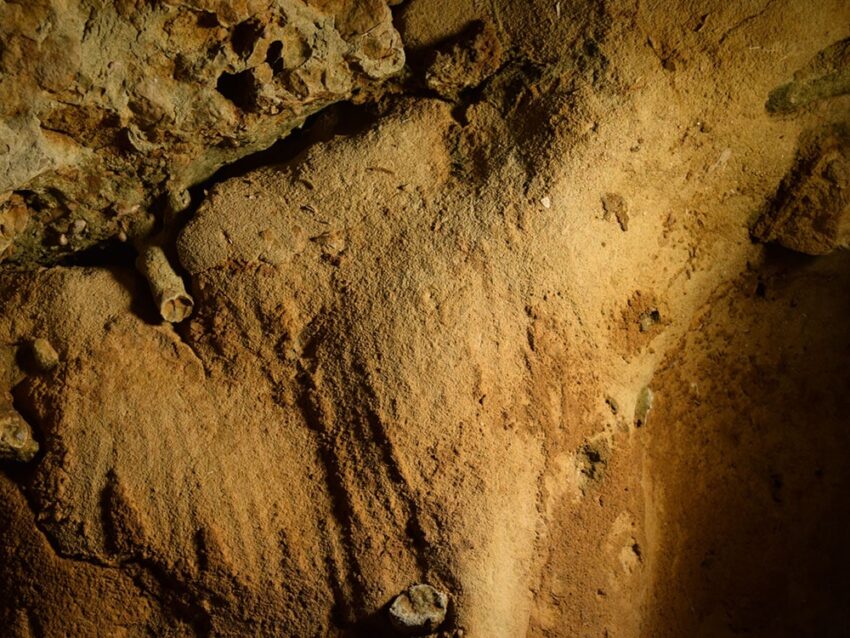Recent research in the La Roche-Cotard cave in France, which has been closed for thousands of years, suggests that the engravings in the cave were actually made by Neanderthals. The research, conducted by Basel archaeologist Dorota Wojtczak in collaboration with a group of researchers from France and Denmark, reveals that Neanderthals were actually the first people to appreciate art.
When French archaeologist Jean-Claude Marquet first entered the La Roche-Cotard cave in the Loire Valley in 1974, he suspected that the fine lines on the wall might be of human origin. He also found scrapers and other retouched pieces known as Mousterian stone artifacts, suggesting that the cave was used by Neanderthals.
Were the marks on the wall evidence of early Neanderthal artistic activity? Asking this question went against the consensus of the time, which assumed that Homo neanderthalensis lacked higher cognitive abilities. Fearing that he would not be able to provide enough scientific evidence to prove his hypothesis, Marquet left the cave untouched for almost 40 years.
Together with an international team, he undertook another initiative in 2016. This time he was accompanied by Dr. Dorota Wojtczak from the Integrative Prehistoric and Archaeological Science (IPAS) at the Department of Environmental Sciences at the University of Basel, specializing in archaeological use wear analysis. “Our task was to use modern methods to prove the human origin of these wall engravings,” says Wojtczak. The researchers recently published their findings in the journal PLOS ONE.
First with photographs and drawings, then with a 3D scanner, the traces in the tuff rock of the cave wall were meticulously recorded. In his laboratory in Basel, Wojtczak compared the samples taken from the cave with wood, bone and stone tools, as well as tuff, which he experimentally worked by hand. This research clearly showed that the cave marks were not made with tools, but by scratching with human fingers.



At the same time, researchers from Denmark also analyzed the cave sediments. They found that the cave had been sealed for more than 50,000 years by mud deposits and soil deposits from the Loire. This makes the La Roche-Cotard cave system a very special place, a real time capsule. “50,000 years ago, there were no modern humans in Europe, only Neanderthals,” says Wojtczak. That’s why the wall traces and artifacts can only belong to these first people.
The clear geometric shapes of parallel and triangular lines are not thought to have been scribbled on the wall by chance, but it is not known what they represent. “But they could have been made by someone acting with planning and understanding,” she says. Whether this is “art” or a form of record-keeping remains a mystery.
La Roche-Cotard cave holds many other archaeological secrets
In 1976, Jean-Claude Marquet found an object that looked like a human or animal face, and Wojtczak’s use-wear analysis showed that this object was also human made. Another object found in the cave appears to be a small oil lamp. “Experts are currently investigating whether the object carries any pigment or soot that could help determine the type of fuel used at the time,” Wojtczak said.
The La Roche-Cotard chamber discovered so far is only part of a whole cave system. More can be learned about the activities of Neanderthals, especially from the area that is still largely covered in sediment. Wojtczak believes that any research will help break down the traditional view that Neanderthals were mentally inferior humans. “They could talk and probably even sing,” she adds. Research into Neanderthal life will continue.
